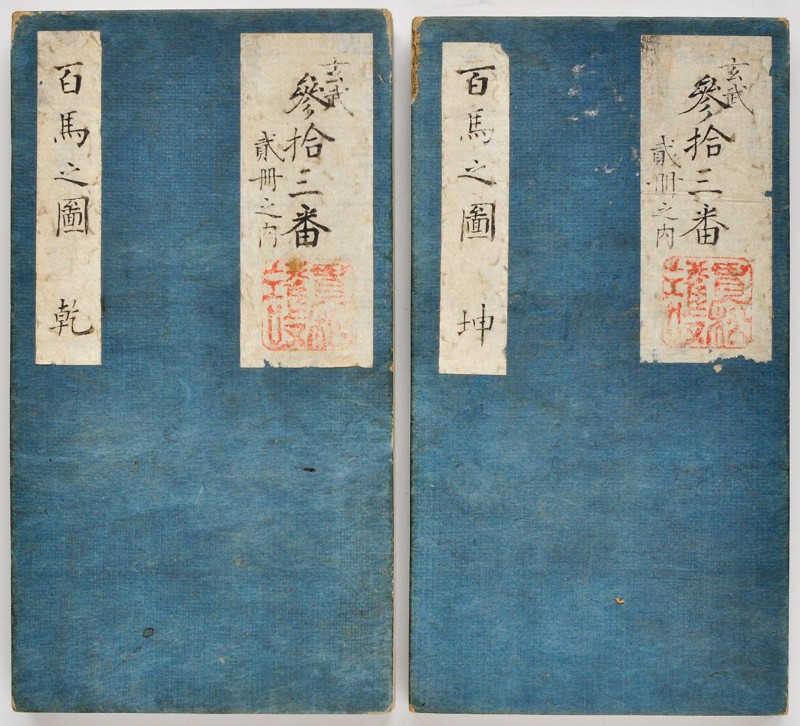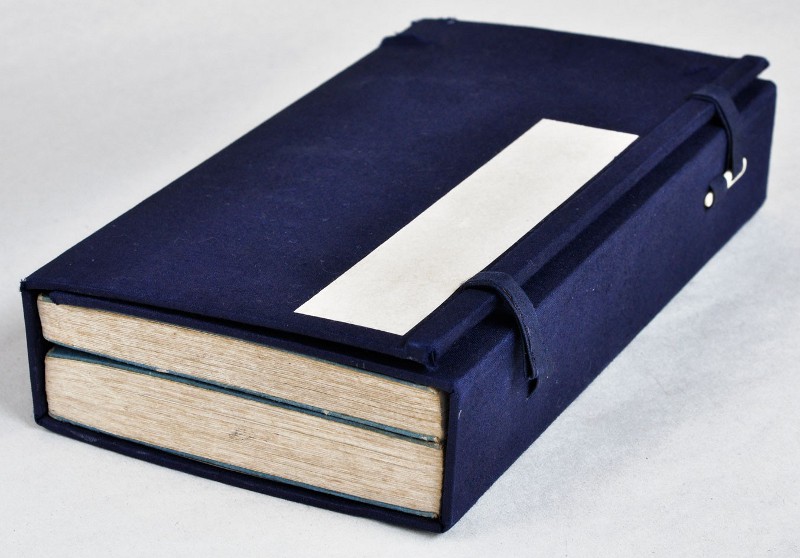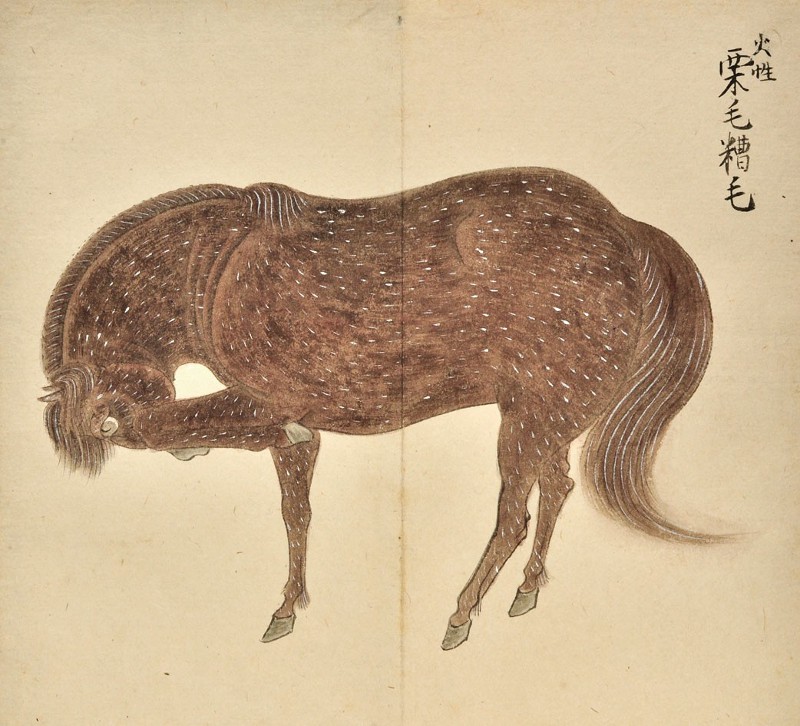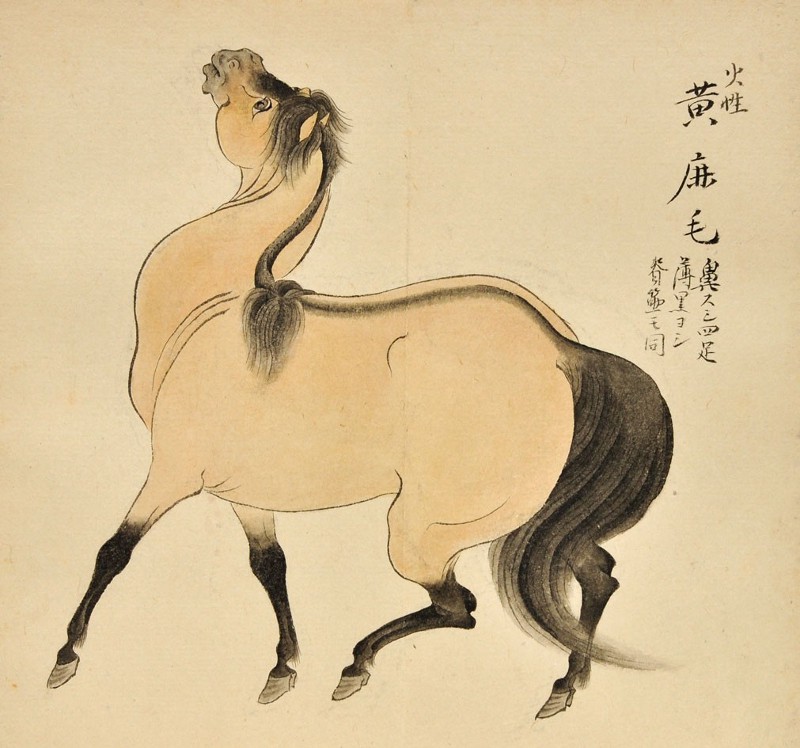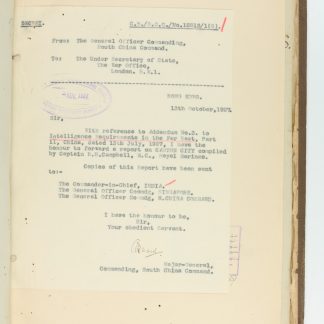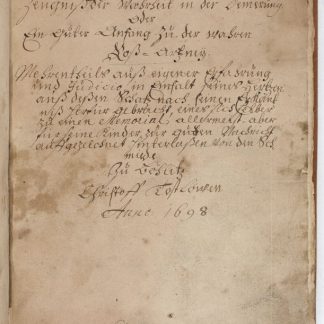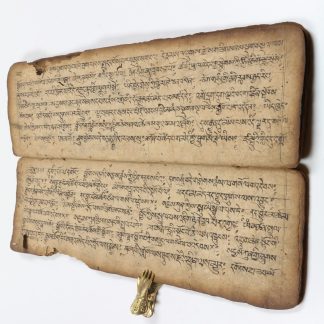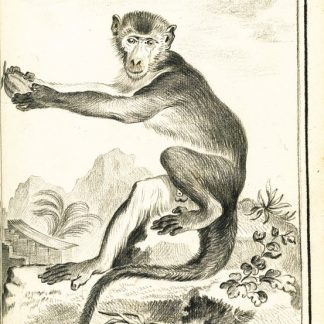Equestrian manuscript
Hyakuba no zu [The Hundred Horses].
Manuscript (brush and wash), 2 vols., 194 × 105 mm, concertina-folded, with 61 drawings of horses (each double page, i.e. c. 210 × 195 mm), captioned. Original blue paper covered boards, labels to upper covers titled in manuscript. Traces of a numerous very neat paper repairs (usually correcting minute wormholes, as typical of Japanese books of this date, not affecting images), former (Japanese) owner's stamps to cover labels and first illustration in each volume. Preserved in a later blue silk covered folding case (wanting one bone closure).
€ 25.000,00
An elegant and delightful series of manuscript portraits of horses by an unidentified Japanese hand. 'The Hundred Horses' was a popular subject in Japanese art and is represented both in panel pictures, scrolls and books. The title is representative rather than prescriptive and does not denote one hundred in number, but simply 'many'. While the horse was an ancient component of Japanese art, the subject of the Hundred Horses was probably introduced into Japan under Chinese influence by the beginning of the Edo period (1603), with associations of courtly culture based on the noble and military connotations of the horse. The concern here is for careful typology of the different breeds, with characteristics of physique and markings neatly depicted and explained in the captions ('chestnut', 'spotted' etc), but the various postures and attitudes are arresting. An example of a manuscript book of similar period, slightly more elaborate, is preserved in Waseda University Library.



